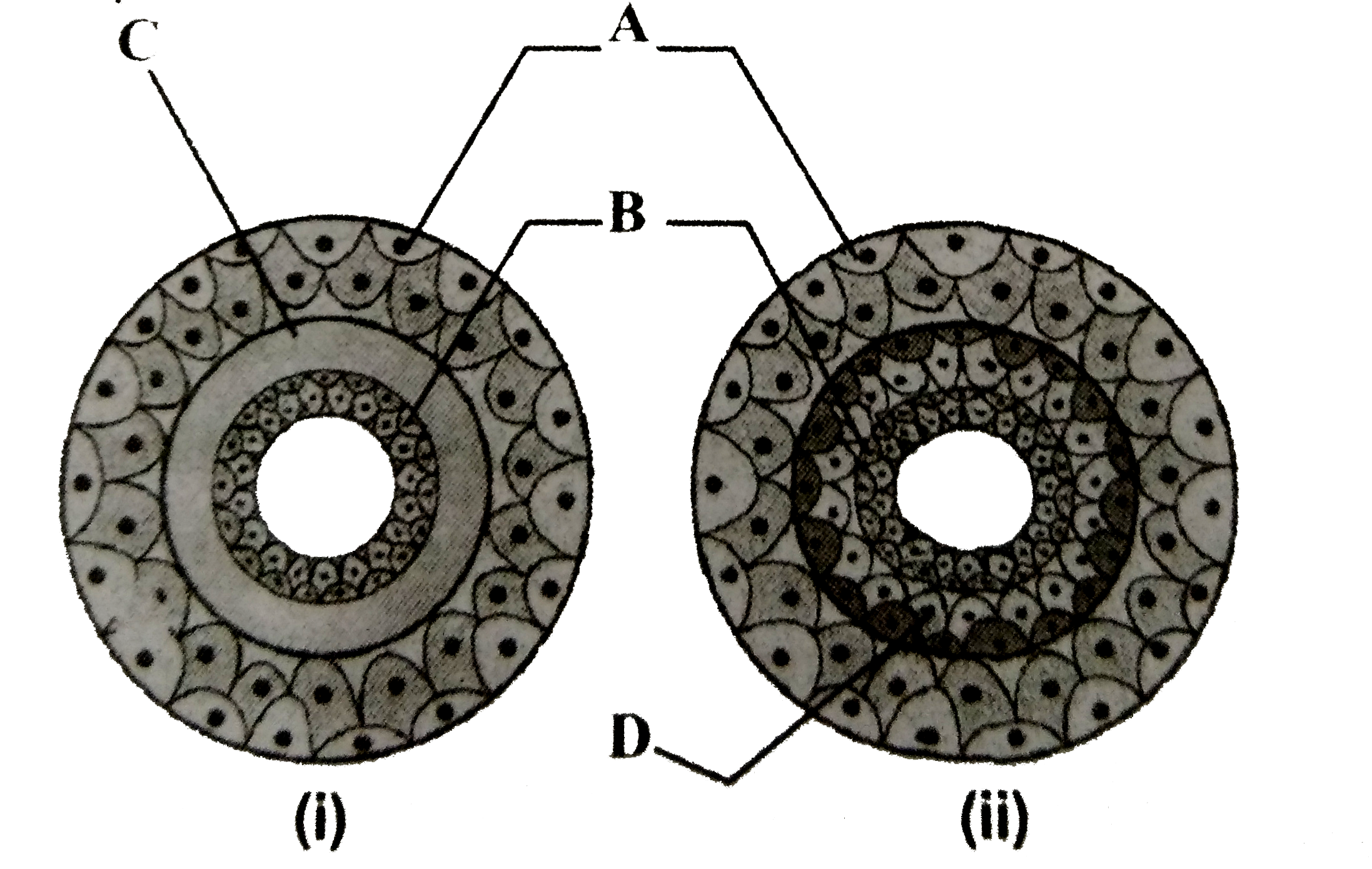Identify the phylym from the statements given below : (i) Their body is circular in cross section (ii) They may be free living, aquatic and terrestrial, parasitic in plants and animals (iii) They are bilaterally symmetrical, triploblastic and pseudocoelomate
Cnidaria
Aschelminthes
Annelida
Arthropoda
The correct Answer is:B
To identify the phylum based on the given statements, we can analyze each statement step by step:
Step 1: Analyze the Body Shape
- The first statement mentions that the body is circular in cross-section. This characteristic is typical of certain phyla, particularly those that are elongated and cylindrical.
Hint: Consider the shape of the organism when cut across its body.
Step 2: Determine Habitat
- The second statement indicates that these organisms can be free-living, aquatic, terrestrial, and parasitic in both plants and animals. This wide range of habitats suggests a diverse group of organisms.
Hint: Think about which phyla include organisms that can thrive in various environments, including as parasites.
Step 3: Symmetry and Body Structure
- The third statement describes the organisms as bilaterally symmetrical, triploblastic, and pseudocoelomate. Bilateral symmetry means the body can be divided into two equal halves, triploblastic indicates three germ layers (ectoderm, mesoderm, endoderm), and pseudocoelomate means they have a body cavity that is not completely lined by mesoderm.
Hint: Recall which phyla are known for having a pseudocoelom and their body symmetry.
Step 4: Identify the Phylum
- Based on the analysis of the three statements, the phylum that fits all these characteristics is Aschelminthes (also known as Nemathelminthes). This phylum includes roundworms, which are known for their circular cross-section, diverse habitats (free-living and parasitic), and their bilaterally symmetrical, triploblastic, and pseudocoelomate body structure.
Hint: Think about the common examples of organisms in this phylum and their characteristics.
Conclusion
The correct answer is Aschelminthes (Nemathelminthes), as it is the only phylum that meets all the criteria mentioned in the statements.
- The first statement mentions that the body is circular in cross-section. This characteristic is typical of certain phyla, particularly those that are elongated and cylindrical.
- The second statement indicates that these organisms can be free-living, aquatic, terrestrial, and parasitic in both plants and animals. This wide range of habitats suggests a diverse group of organisms.
- The third statement describes the organisms as bilaterally symmetrical, triploblastic, and pseudocoelomate. Bilateral symmetry means the body can be divided into two equal halves, triploblastic indicates three germ layers (ectoderm, mesoderm, endoderm), and pseudocoelomate means they have a body cavity that is not completely lined by mesoderm.
- Based on the analysis of the three statements, the phylum that fits all these characteristics is Aschelminthes (also known as Nemathelminthes). This phylum includes roundworms, which are known for their circular cross-section, diverse habitats (free-living and parasitic), and their bilaterally symmetrical, triploblastic, and pseudocoelomate body structure.
The correct answer is Aschelminthes (Nemathelminthes), as it is the only phylum that meets all the criteria mentioned in the statements.
Topper's Solved these Questions
Similar Questions
Four characters ( a -.d) are given below . Which two are CORRECT about phylum arthropods ?
(i) it is the largest phylum of animal kingdom .
(ii) one third of all named species on earth are arthropods.
(iii)They are bilaterally symmetrical , triploblastic and segmented animals .
(iv) The body is covered by calcareous exoskeleton.
View SolutionRead the statements regerding echinoderms and choose th correct option (i) All are marine with organ system level of organisation (ii) Adults are bilaterally symmetrical (iii) They are dioecious (iv) Fertilization is internal an indirect development is observed (v)Triploblastic and acoelomate animals
View Solution
Knowledge Check
Given below are three statements regarding Aschelminthes.
(i) They are bilaterally symmetrical and triploblastic.
(ii) They are dioecious.
(iii) All are plant or animal parasites.
Select the option that has both the correct statemets.A(i) and (iii)B(i) and (iii)C(ii) and (iii)DNone of these
Identify the plants (from the list i-vi) which possess the given type of guars cells (as shown in the diagram) in their leaves.
(i). Grass
(ii). Tomato
(iii). Banana
(iv). Brinjal
(v). Soyabean
(vi) LilyA(i),(ii) and (v)B(ii), (iii) and (iv)C(i),(iii) and (vi)D(iv),(v) and (vi)Identify the correct terms for the given statements and select the correct answer.
(i) Sudden increase in the rate of respiration during ripening of fruits.
(ii) Reduction in the consumption of respiratory substrate when mole of respiration is changed from anaerobic to aerobic.
(iii) Respiratory oxidation of carbohydrates and fats.APasteur effectFlating respirationClimacteric respiration(i)(ii)(iii).BPasteur effectFlating respirationClimacteric respiration(i)(iii)(i).CPasteur effectFlating respirationClimacteric respiration(iii)(ii)(i).DPasteur effectFlating respirationClimacteric respiration(ii)(i)(iii).
Read the statements given below and identify the suitable option :
(i) Eye of Octopus and mammals are homologous.
(ii) sweet potato and potato are analogous.
(iii) Thorus of Bougainville and tendrils of Cucurbita are homologous
View Solution(i) Identify any two marsupials from the list given below: (a) Lemur (b) spotted cuscus (c) Flying phalanger (d) bobcat (e) tasmanian wolf (f) mole (ii) Australian marsupials exhibit adaptive radiation." Justify the statement.
View SolutionThe statements given below descibe certain features that are observed in the pistil of flowers.
(i) Pistil may have many carpels.
(ii) Each carpel may have more than one ovule.
(iii) Each carpel has only one ovule.
(iv) Pistil have only one carpel.
View SolutionThe statements given below describe certain features that are observed in the pistil of flowers.
(i) Pistil may have many carpels.
(ii) Each carpel may have more than one ovule.
(iii) Each carpel has only one ovule.
(iv) Pistil have only one carpel.
View SolutionExamine the figures of diploblastic (i) and triploblastic (ii) organisation in animals given below and identify the labelled parts A to D.

View Solution
